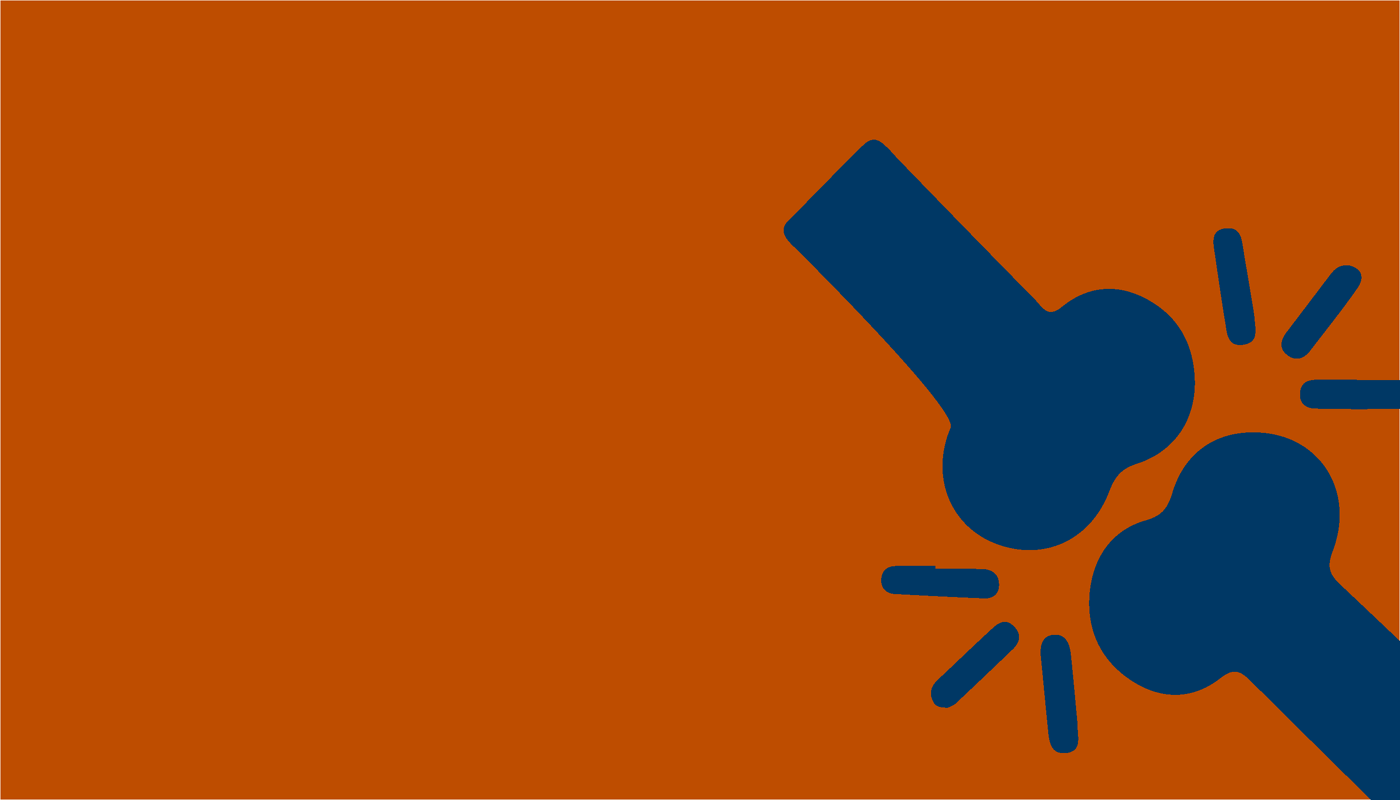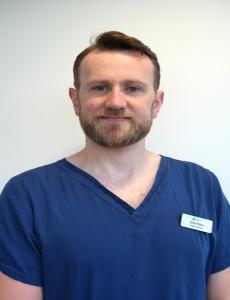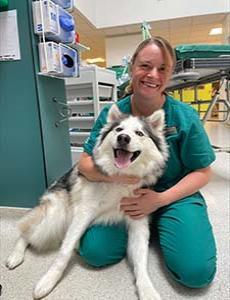
Our Orthopaedics service offers a high standard of care to pets with injuries or diseases of the musculoskeletal system: bones, joints and associated soft tissues.
How we can help
The Orthopaedic Surgery Service is pleased to provide you with high quality care for a wide range of cases. We have on-site state of the art orthopaedic diagnostic facilities and equipment, including digital radiography, intra-operative C-arm, arthroscopy, CT and MRI scanners. We can offer a range of treatment plans to suit every animal and owner’s individual circumstances.
Top tips for vets to help us help your clients:
- Please ensure clients have a realistic estimate of costs, to avoid embarrassment and upset.
- Please ensure all paperwork / imaging is sent to the SAH at least 48hs in advance of the appointment
- Ideally, radiographs should have standard markers on them so that we can make measurements, otherwise we have to repeat the images at further expense to your client.
Surgical services include, but are not limited to, management of:
Cruciate Disease
Current best evidence suggests that TPLO’s give the best outcomes, however all options will be discussed with the individual client. Evidence suggests that between 33-50% of dogs will rupture the contralateral cruciate within 13 months, and in cases that present bilaterally, we are happy to perform the surgery either simultaneously, or staggered by a few days, at reduced cost to the client.
+++
Estimates
- Extra-capsular suture (ECS): £2300
- Bilateral ECS: £3000
- TPLO: dogs <30kg £3800, >30kg £4100; very large dogs requiring a 4.5mm plate £4500
- Bilateral TPLO: £6000-£7000
These estimates include the:
- initial consultation, work-up (e.g. sedation and radiographs), hospitalisation, GA and surgery, and
- follow up re-examination, including sedation and radiographs (where appropriate).
---
Elbow dysplasia
Typically seen in young medium-large breed dogs with intermittent forelimb lameness. The most common underlying pathology is medial coronoid disease, but other pathologies include incomplete ossification of the humeral condyle (IOHC, particularly in Spaniels), OCD, ununited anconeal process (particularly GSD’s), and osteoarthritis. In most cases, a CT (performed under sedation) is required for a definitive diagnosis of the underlying pathology and treatment decision-making.
+++
Estimates
- Consultation, sedation and CT (both elbows): £1200
- Distal femoral osteotomy £4500 (includes CT)
---
Medial coronoid disease
The evidence suggests no better outcome for medical vs surgical management, but in those dogs with a fissure / fragment identified on CT, that do not respond to appropriate conservative management, we recommend arthroscopic examination, fragment removal and debridement of the joint.
+++
Estimates
- £2500-3000 (unilateral or bilateral elbow arthroscopy).
---
Incomplete ossification of the humeral condyle (IOHC)
Incomplete ossification of the humeral condyle (IOHC) tends to present in two ways:
- Intermittent chronic low grade lameness in a foreleg of predisposed breeds, especially Spaniels
- An acute fracture of the lateral humeral condyle, or a more catastrophic humeral Y or T fracture.
If an IOHC is diagnosed a trans-condylar screw can be placed ‘prophylactically’ to reduce the risk of subsequent fracture, although this is not without potential complications.
+++
Estimates
- Transcondylar screw placement for IOHC - unilateral £3000, bilateral £3500
- Single condylar fracture repair with transcondylar screw and epicondylar plate £3500
- Y or T fracture – typically requiring transcondylar screw and 2 plates £6000
---
Patella Luxation
Routine correction of most Grade 2-3 medial patella luxations (MPLs) involves recession trochleoplasty, tibial tuberosity transposition and soft tissue imbrication. Where associated long bone deformity exists (femoral or tibial varus / valgus / torsion), a CT scan may be required to determine whether a distal femoral osteotomy (DFO) or less likely, proximal tibial osteotomy might be required.
+++
Estimates
- Routine MPL correction - estimate: £2500-3000
- More complex corrections (DFO or tibial osteotomy) including CT: £4000
Fracture repair
The cost of repair is determined by the complexity and therefore surgical time, and implants used.
+++
Estimates
In general:
- Simple fractures e.g. lateral condylar fracture, or simple tibial diaphyseal fracture: £2500-3000
- Moderately complex fractures e.g. comminuted femoral fractures: £4000
- Complex fractures e.g. T or Y humeral fractures - £6000
---
Angular limb (ALD) and growth deformity correction
A CT is usually required to define the bony abnormality and plan the surgery. The simplest and most common ALD arises due to premature closure of the distal ulnar growth plate, creating a bow-string effect on the radius, which results in a 3D deformity, with radial curvature, valgus and rotation. Appropriate surgery depends on the age of the animal and may involve ulnar osteotomy / ostectomy and radial osteotomy.
+++
Estimates
- Surgical costs range from £2500-£4000 depending on the complexity of the correction.
---
Arthrodesis
Partial or complete carpal or tarsal arthrodesis.
+++
Estimates
- £5000-£5500
---
Routine post-operative re-examinations
Routine post-operative re-examinations including consult, sedation and radiography.
+++
Estimates
- Average £280
---
Ongoing medical management
Optimising conservative / medical management of joint diseases (in association with our pain clinic and physiotherapy unit where appropriate), including hip dysplasia and osteoarthritis.
+++
Estimates
- Consultation £280
---
MEET THE TEAM
Andrew Maclaughlan BVM&S BSAVAPGCertSAS MRCVS
University Clinician in Orthopaedics
Andrew returned to Glasgow University in 2021 having previously completed his Rotating Internship here.He has many years of experience in small animal orthopaedics and has worked exclusively in referral practice since 2018.He enjoys all aspects of orthopaedics but has a particular interest in minimally invasive fracture management.
Andrew is a Royal College of Veterinary Surgeons Recognised Advanced Practitioner in Small Animal Surgery.

James Philips BVMS PgC(SAS) MRCVS
Clinician in Small Animal Surgery
James Graduated from Glasgow University in 2012. He initially worked in mixed animal practice before moving to small animal only practice in Glasgow.
James initially worked in mixed animal practice before moving to small animal only practice where he developed an interest in surgery. He completed a post graduate certificate in surgery in 2018 and went on to work as a peripatetic surgeon for CVS offering soft tissue and orthopaedic referral surgery for their practices throughout Scotland and the North East of England. He joined the Small Animal Hospital in 2023 and has a keen interest in cruciate disease treatment and fracture repair but also specialises in oncology cases and skin reconstruction.
James is a Royal College of Veterinary Surgeons recognised Advanced Practitioner in Small Animal Surgery.

Iona Macdonald RVN CertVNECC
Senior Veterinary Nurse
Iona qualified as a Registered Veterinary Nurse from Myerscough College in 2010, further studying for a certificate in Emergency and Critical Care in 2013. She gained experience working in multi-disciplinary referral hospitals before joining our nursing team in 2019.
She is passionate about providing a high standard of care to her patients and can often be found in the wards ensuring her patients have everything they need. As our Senior Surgery Nurse she is responsible for both the orthopaedic and soft tissue cases.


